If you were a kid in the 1990s and had basic cable, you are probably familiar with the spandex clad, butt-kicking super team known as The Mighty Morphin Power Rangers.
 |
| Not quite. |
The show begins when Rita Repulsa, an evil alien sorceress who has been sealed away in her planetary prison for the past 10,000 years, is released by two hapless astronauts. I guess plans of world domination must be a popular form of recreation for for those recently sprung from the joint because the first things all evil sorcerers seem to want to do when they are released is take over planet Earth for no apparent reason. The all-knowing, giant floating head, Zordon --
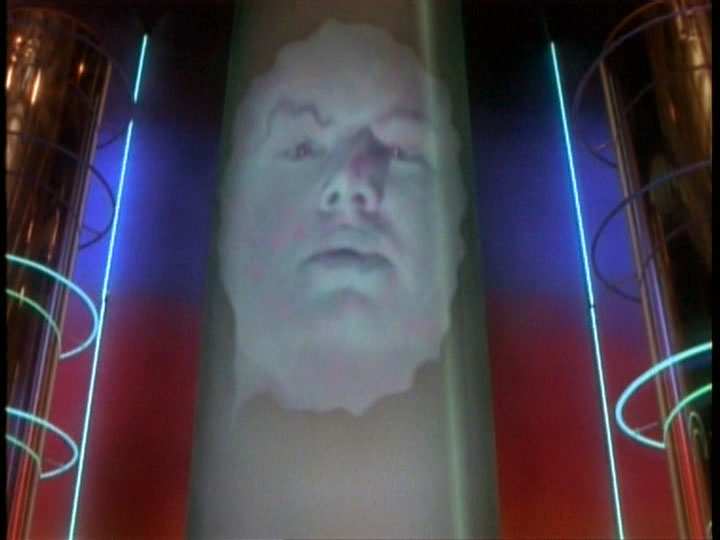 |
| Like so |
-- tells his robot assistant Alpha to find him five “overbearing and over-emotional humans,” (i.e. teenagers) to become the defenders of the planet. Because we all know that we like our supernatural crime fighting teams the way we like our pop idols: beautiful, oversexed, and underaged.
 |
| The original 1993 cast of The Mighty Morphin' Power Rangers. |
The rangers assembled are all high school students from Angel Grove, California: Billy (Blue ranger), Jason (Red ranger), Zack (Black ranger), Trini (Yellow ranger), and Kimberly (Pink ranger).
They gain weapons from Zordon as well as morphers, communicators, and their respective Zords -- giant fighting robots in the shape of their respective dinosaurs. When the villain is too strong for the rangers and their Zords individually, the machines unite to create the Megazord.
 |
| The DinoZords |
In each episode they have a personal issue they’re dealing with in school whether it be gymnastics competitions, getting good grades, or trying to get signatures for a petition to save the environment. You know, the stuff actual high-schoolers are too caught up in their facebook drama to care about. The only thing that really puts a damper on their fun are the two school bullies, Bulk and Skull, a Laurel and Hardy team who provide slapstick comedic relief. Remember, this was back in 1993 when bullying was shoving you into lockers, not viciously singling you out to diligently cut away your self-esteem until you’re driven to suicide. This was afternoon programming for children after all.
The wholesome high school shenanigans were usually interrupted by some sort of monster sent down by Rita Repulsa who – having not yet figured out how to hook up her cable – basically had nothing better to do.
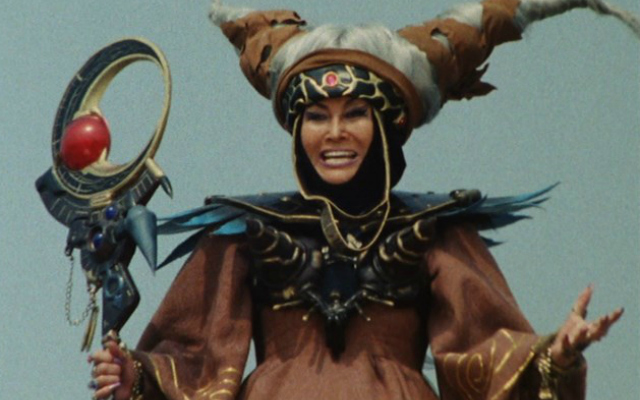 |
| Rita Repulsa, probably about to break something. Just cuz. |
Based on your level of dorkdom (or a certain level of “I never really gave a crap”), you may or may not be aware that this show was based off of and used footage, props, monsters, and costumes from a popular Japanese Super Sentai series (sentai meaning essentially “task force”) known as Kyoryu Sentai Zyuranger which originally aired in Japan in 1992.
In the original series, the creators pull a Dr. Who and create an anachronistic "wibbly wobbly, timey wimey" version of history so that 170 Million years ago, tribes of dinosaurs simultaneously co-existed with beings that descended from dinosaurs (who look an awful lot like humans) literally translated on several websites I found as "Homo Dinosaurs." I would make a joke about that, but I'm not five-years-old.
I'm four-and-three-quarters, thank you very much.
I'm four-and-three-quarters, thank you very much.
The dinosaurs and these prehistoric humans lived side-by-side in five tribes that were protected by their individual Beast Guardians (a pterodactyl, triceratops, sabretooth tiger, t-rex, and a mammoth) until the witch Bandora (who flipping hated dinosaurs and children) set out to destroy them all.
Fortunately, the five Beast Guardians were able to seal her away on Planet Nemesis where she wouldn’t constantly kill things. As a safeguard, one member of nobility was chosen from each clan to be put to sleep and only awoken if Bandora were to somehow escape her prison. These nobles were: Mei, the Risha Tribe's Warrior of Love (The Pteraranger), Dan, the Etoph tribe Warrior of Courage (The Triceraranger), Goushi, the Sharma tribe Warrior of Wisdom (The Mammothranger), Boi the Daim tribe Warrior of Hope (The Tigerranger), and Geki, the Yamato tribe Warrior of Justice (The Tyrannoranger).
Fortunately, the five Beast Guardians were able to seal her away on Planet Nemesis where she wouldn’t constantly kill things. As a safeguard, one member of nobility was chosen from each clan to be put to sleep and only awoken if Bandora were to somehow escape her prison. These nobles were: Mei, the Risha Tribe's Warrior of Love (The Pteraranger), Dan, the Etoph tribe Warrior of Courage (The Triceraranger), Goushi, the Sharma tribe Warrior of Wisdom (The Mammothranger), Boi the Daim tribe Warrior of Hope (The Tigerranger), and Geki, the Yamato tribe Warrior of Justice (The Tyrannoranger).
Predictably, humans – who seem to like to open things just because they can – discovered her secret prison while on a space mission and broke the seal, releasing the witch and her minions. As a means to thank them, she blows the astronauts into space, sending them hurtling weightlessly to their deaths. Apparently she was in a hurry and the Hallmark store was closed.
Barza, a wizard-ish dude who was the basis for Zordon, uses his massive ear to hear the seal being broken from millions of miles away back on earth.
He then springs into action to wake up the slumbering heroes and thus their journey begins. Along the way, they gain new weapons from the guardians as well as the ability to harness the power of a God who emerges only when the five Beast Guardians unite.
He then springs into action to wake up the slumbering heroes and thus their journey begins. Along the way, they gain new weapons from the guardians as well as the ability to harness the power of a God who emerges only when the five Beast Guardians unite.
In the first season of the Mighty Morphin Power Rangers, most of the fight scenes and in-costume sequences (aside from things taking place in Zordon’s control room) were out of context footage taken from the Zyurangers series. All of the scenes showing the character’s faces were filmed in America and worked with entirely new overarching storylines. Almost any sequence where they are sporting masks and fighting baddies, or any scene with Rita Repulsa or the Zords during season 1 were from Zyurangers. That’s why the witch seemed somewhat unsettling when she spoke; the Rita you see is actually the original actress playing Bandora, the late Machiko Soga, with the voice being dubbed over by an American voice actress.
 |
| Bandora the Witch and part-time child predator. |
Ever wonder why even though there are two female rangers, only the pink ranger wears a skirt? That’s because in the Japanese series, she was the only girl and the yellow ranger was a dude…named Boi. If you ever look back at a Power Ranger fight scene and notice the yellow ranger is pretty flat-chested and has a package that Fed-Ex couldn’t deliver, you’ll know that I speak the truth.
 |
| The late Thuy Trang who played Trini had no junk of which to speak... |
 |
| This guy however, was definitively a dude. |
So why were the two shows made to look and feel nothing like each other?
As happens with any translation, some things get lost in the process, if not cut out altogether. In the case of Zyurangers, there were just too many elements that were idiomatic and just wouldn’t translate to an audience of American viewers with limited knowledge of Japanese culture. This is one reason why, if you’re ever unfortunate enough to get trapped in a room with an anime “purist,” most of them would argue that the only real way to enjoy the Japanese media is with subtitles. Although most of them can’t tell you why subs are better, they will simply tell you that “dubs suck.”
I find this hard to believe considering the fact that dubs outsell the crap out of subs and American voice actors are seen as quasi-gods to gaggles of adoring fans at anime conventions around the nation. Plus, it would kind of hamper my voice-over aspirations if I didn’t appreciate a good dub, now wouldn’t it?
 |
| More fundamentalist fans will tell you that true dorkdom isn't contained by things like haircuts or pants. |
I find this hard to believe considering the fact that dubs outsell the crap out of subs and American voice actors are seen as quasi-gods to gaggles of adoring fans at anime conventions around the nation. Plus, it would kind of hamper my voice-over aspirations if I didn’t appreciate a good dub, now wouldn’t it?
Essentially, the heart of the argument is supposed to be that subtitles allowed you to display notes whenever an unfamiliar word or topic was spoken by the characters, allowing you to get a more accurate translation of the cultural elements so you could experience the story in its intended context. When the voices are dubbed into English, you lose the ability to explain language idioms through visual footnotes in the corner of the screen (although some still use them).
Additionally, you’re under time constraints because all the dialogue must be condensed to match the mouth movements of the characters. Subsequently, dialogue, key plot points, and even character names are often altered, abridged, or removed from the series to facilitate the viewing experience for Western viewers, thus creating an adaptation rather than a translation. Carl Macek, one of the people who adapted the several anime series into the 1980s show Robotech , sums it up best:
, sums it up best:
“You can’t just translate a Japanese TV series literally into English if you want the American public to accept it. There are all kinds of little changes you have to make – sort of like creating an American body language – so that the characters will seem more natural to American viewers. For one thing, Japanese cartoons are very slowly paced by American standards. They’re full of long, dramatic pauses while there’s a close-up of somebody’s face registering an emotion, or a slow camera pan across a beautiful background. Americans won’t sit still for that. They’ll turn to another channel.” -- page 310 of the book Watching Anime, Reading Manga: 25 years of Essays and Reviews.
I for one, don’t necessarily see the problem with adapting a story by putting it into a cultural context the audience can understand.
Actually, I’m the biggest hypocrite ever. I see no need why perfectly good Ricky Gervais comedies
One of the most basic cultural differences was that Japan and America have different standards for what’s appropriate for their children. Death of main characters, on-camera or off, is usually a no-no in kid’s entertainment stateside, unless of course that character was a nameless, unsympathetic creature like the Putties, or they just really, really deserved it.
Take it away again, Carl:
 |
| The Putties: A face only a roundhouse kick could love. |
“I took the recommended TV standards and practices for children’s programming and I read them very carefully…the actual standards don’t say that you cannot show death under any circumstances; you can’t show characters getting hurt. They prohibit evil winning over good; they prohibit violence for violence’s sake. In Robotech, the good guys use only enough violence to defend themselves. Some of the bad guys are shown as honestly mistaken rather than as evil; they have a chance to reform. Some of the good guys make mistakes too, and they suffer for them."
Whether we’re aware of it or not, our culture has a moral code in almost all of our fictional entertainment. As I addressed in my Halloween Psych series, the just world phenomenon entails that we can only feel stable if we can believe we live in a world where good things happen to good people and bad things only happen to those who did something to deserve it.
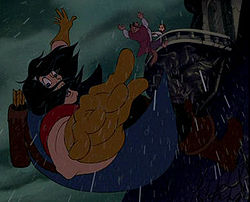 |
| Take that, unbridled chest hair. |
The Mighty Morphin Power Rangers often depicted moral quandaries that were confronted and resolved through good American values and teamwork. In the season two episode, “Doom Bloom,” Lord Zed plans to cause dissension in the ranks by using a poison plant to turn an already envious Kimberly into a raving piss ant who turns on her friends. In the end, she is returned to normal, but the point is made clear that Kimberly made herself susceptible to his attack because she had already allowed envy to sneak into her heart when she resented Trini’s volleyball club for getting more members than Kim’s gardening club.
In the Japanese version, people straight up die in the first five minutes (remember those lucky astronauts?). You don’t have to be a giant evil plant or Minotaur to get capped (although it certainly helps).
Bandora used to be a fairy queen but destroyed the dinosaurs and is basically a child murderer because she was actually a grieving mother. She repressed the memory that her own son was killed by a dinosaur so all she remembers is that she’s mad at pretty much everyone and can no longer stand the sight of children. The same as with its anime, Japan likes to display a level of moral ambiguity in both its heroes and its villains because it makes for a more dynamic story. In American kids shows, it seems good and evil always need to be clearly delineated because I guess our children are just simple-minded folk who don’t need to be confused with character motivations and psychoanalysis. They just want to see stuff go boom.
 |
| The Michael Bay School for Explosive-Happy Toddlers. |
In general, Japanese parents seem to be more lax in the amount of violence, death, and horrific images their children are allowed to see. This is why seeing the Japanese language, subtitled version of a children’s anime is always going to be much less censored and often a lot darker in tone than the dubs meant for distribution on American television. When it came out, parents in the U.S. protested the Power Rangers, decrying it as too violent and a bad influence on their kids. But sticking within the TV standards, the Mighty Morphin Power Rangers didn’t use excessive violence, they stuck to the guidelines of using it only enough to defend themselves and the world. That’s admirable right? After having seen the first 6 episodes of the Japanese version, I’m gonna say that the Land of the Rising Sun could teach these parents a thing or two about what real violence is.
For example, when the Putties are vanquished by the Power Rangers, they tend to just get kicked out of the view of the camera or disappear, while the Zyurangers are busy slashing them with swords and running them through with spears 300 style. One of the bad guys, Dora Skeleton, gets his head lopped off and one of the rangers throws it into the fiery pit off hell which just happens to be conveniently located to their left.
When Bandora’s son is killed, she vows vengeance and makes a pact with Satan to give her power to destroy the planet. The friggin’ lord of the underworld gets a cameo on Japanese TV yet the U.S. media gets in a tizzy whenever the Big Man Upstairs gets a shout-out in a courtroom? Whatevs. We live in a country where Snuggies sell millions and Tila Tequila is considered famous enough to get her own TV shows so I guess there are some things I’ll just never understand.
Even when things aren’t necessarily violent or satanic in Zyurangers, they’re downright disturbing on a profound psychological level. Which makes it oh so much fun.
In one episode, the souls of Japanese children are trapped inside of trees in a forest that’s getting cut down to make way for a golf course. You see the children screaming and crying as the developers take chainsaws to their trunks and slice away. If they employed that plot device on Captain Planet, I can almost guarantee you that every Millenial youth would be a devout tree hugger and probably wouldn’t even pick flowers…just to be safe.
In one episode, the souls of Japanese children are trapped inside of trees in a forest that’s getting cut down to make way for a golf course. You see the children screaming and crying as the developers take chainsaws to their trunks and slice away. If they employed that plot device on Captain Planet, I can almost guarantee you that every Millenial youth would be a devout tree hugger and probably wouldn’t even pick flowers…just to be safe.
But devil worship, decapitation and deforestation aren’t the only things keeping the Zyurangers from being accepted by U.S. audiences.
Japan as a nation is really old and steeped with culture, tradition, and mythology to draw from that a n00b like America doesn’t really have in its arsenal. This time discrepancy may or may not be worth noting, but the backstory for the Power Rangers series began with Rita’s imprisonment only 10,000 years ago, whereas the original series found its genesis over 170 million years ago in the age of the dinosaurs where ancient gods and spirits were abundant. When Geki, the Tyrannoranger reads about the epic battle that took place, the images resemble the style of wood block paintings, a traditional form of Japanese art often used to represent scenes from history or mythology.
The Zyurangers draw from ancient archetypes of brave, stoic warriors in ceremonial garb, well-versed in swordplay and martial arts, who cast off material and personal pleasures for the cause of the greater good. The Japanese are much more intrinsically spiritual and pantheistic than Western culture. In Shinto mythology, animals, trees, even inanimate objects like swords often have spirits of some kind. In the Power Rangers, the Beast Guardians were just referred to as Zords, machinery that that rangers could pilot and unite to form Megazord. In the original, the Beast Guardians were actual spirits that guarded their individual tribes in the age of the dinosaurs, and now help the Zyurangers along their path, often granting them power, visions, and sentient weapons. If the spirit is displeased with something, it will tell them so with words or gestures and will even eject the rangers from the cockpit if they tick them off enough. The “Megazord” that we all know and love, was not just an awesome machine, but an actual god with thoughts and feelings of its own.
 |
| "I feel like all we ever do is fight, guys. Can't we just sit around and, idunno, share how our days went?" |
The United States of America is only a couple hundred years old, and nobody really wants to create a show based on our “epic” history by creating a super task force consisting of historical figures like Ben Franklin, Thomas Edison, and Susan B. Anthony.
Or don't they...
Or don't they...
 |
| I invented bifocals, electricity, and awesomeness. |
That’s why I think the American adaptation of the series dropped the historical, spirit guide component and shifted the focus onto modern youth and technological advances such as the addition of Alpha the robot, Zordon’s command center, high-tech communicator devices, and the simplified revisioning of the Zords as merely giant robots that kicked butt. Besides the hang up that our own history is boring and lacks dynasties, samurai, and those uncomfortable-looking Japanese sandals, even if the show were to draw cultural influences from America’s past, who’s past and which culture would it be representing?
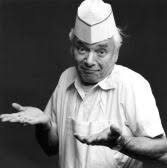 |
| This guy's hat surely doesn't know. |
The Japanese are a very homogenized people with mostly everyone having similar genetic features and origin. America, with its colorful history and multicultural make up, would not be served well by a show that only featured the ancestry of a smaller percentage of the country’s demographic. This is why, even though the original was more epic and magical, it was a smart move for the American adapters to drop the cultural and historical elements and recast the show with a more diverse ensemble. It’s proven that people are more likely to watch a show if their demographic has a strong presence on it. Therefore they whitened up a couple of the kids to represent the ethnic majority, and then added an African-American, an Asian-American, and secured a stronger female demographic by adding a second girl to the squad.
I’m sure there are other reasons behind the changes and maybe I’m just dedicating a lot of analysis into what could have been completely arbitrary decisions by the Power Rangers staff. Either way, I definitely recommend looking up a few of the super sentai series on youtube or something, because you may even find that you like that version better or it could just provide you with a good laugh or WTF moment. Hopefully, seeing the foreign origin of what we thought of as iconic American television as children, will help us better realize that our cultural experiences have been somewhat tailored for us so to minimize the discomfort that comes from cross-cultural interaction. You may never get the chance to visit a foreign country or even leave your state, but it will be eye-opening to step outside of your myopic experience of the world and get a taste of another country through its music, literature, film, or even it’s weird screaming men with bowler hats:
Not sure how that article turned into a public service announcement for foreign exchange and cross-cultural understanding, but I hope you found the contrasts and comparisons between The Power Rangers and the series it was based on, at least somewhat entertaining.
Do you have any comments you’d want to share of cross-cultural experiences where things seemed completely new, intriguing, or bizarre to you? It could be something you learned while traveling in a different country, or even noticed about a foreign TV show while sitting in the comfort of your own room.
I love comments. I love them almost as much as I love kettle corn. Comments open up a possibility for conversation, and (if you haven’t noticed) I’m quite the talker.
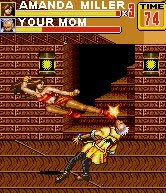
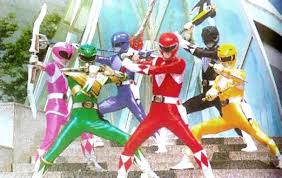

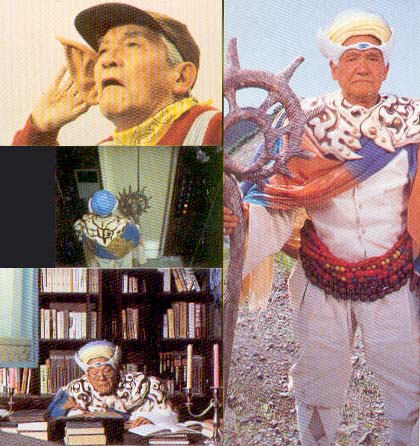




4 comments:
The dude with the bowler hat needs help! :)
I remember the first I went to a restaurant in the United States. I looked at the menu and wondered what people in this country ate as a main course if their appetizer already include steak and various other big hunks of meat until I figured out that Americans use the term "entrees" the wrong way. It refers to an appetizer in France but to main course here. Go figure
Also I had never heard of a peanut butter & jelly sandwich; a staple of every American kid's diet (except for those who'll keel over dead from peanut allergies!)
"Although most of them can’t tell you why subs are better, they will simply tell you that “dubs suck.”"
Personally I like watching the dubbed versions,but with the original subtitles on so that I can see what variation was made in the dubbing process. Granted, it's a little like trying to listen to two people telling the same story at the same time, but once you get used to it, I think greater depth of meaning is revealed from hearing both sides of the story in tandem. Just my two cents...
Post a Comment